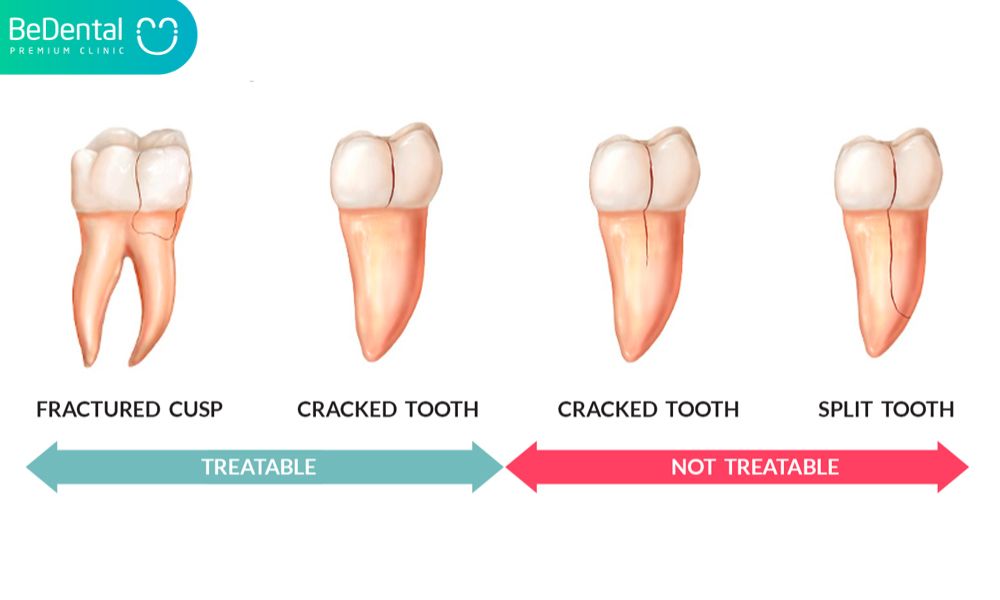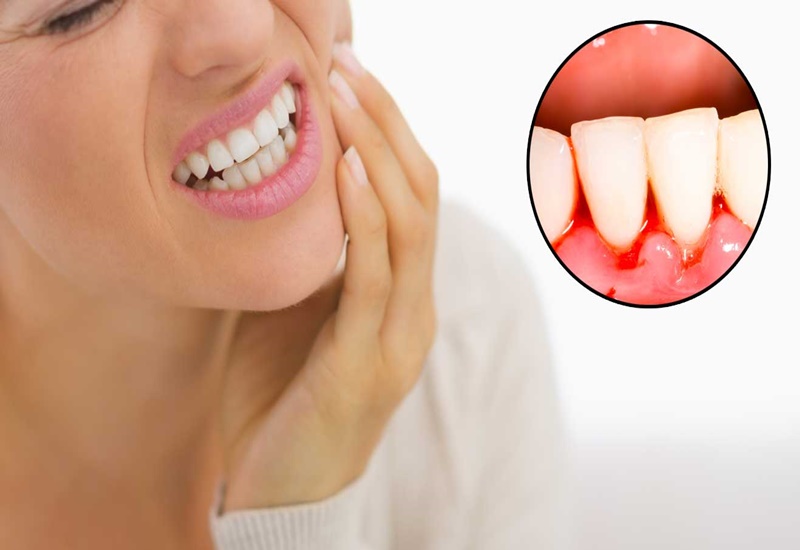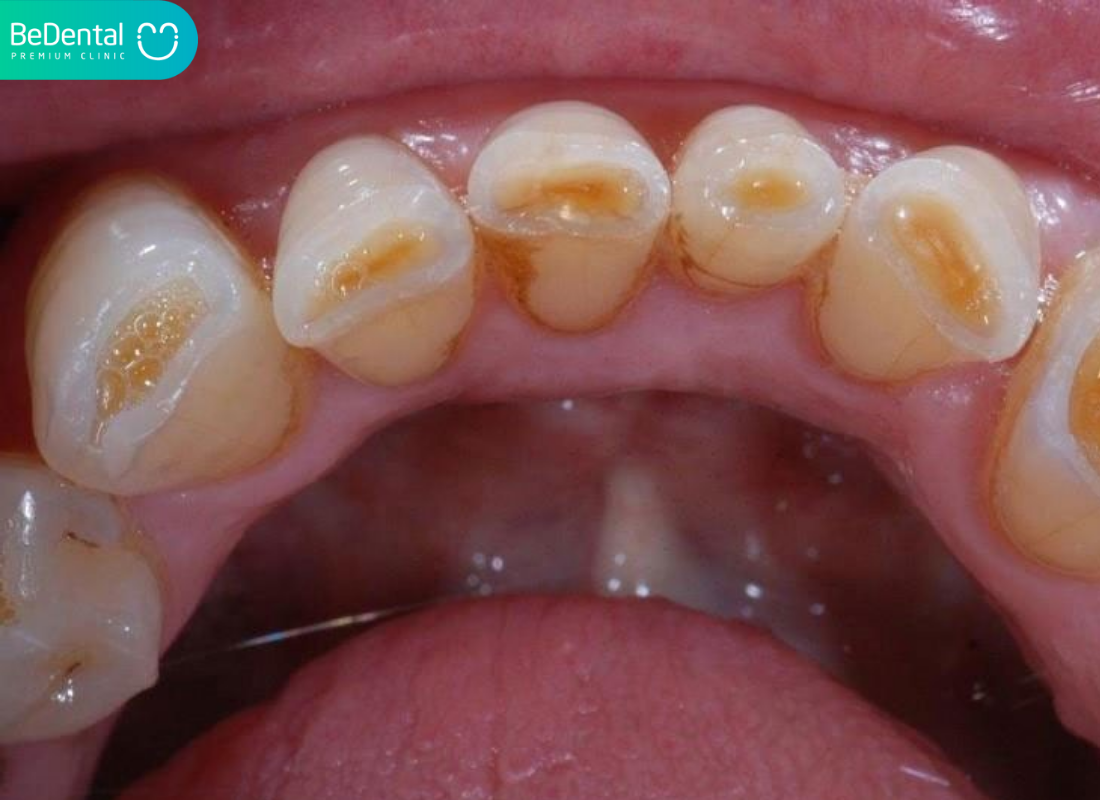A cracked tooth can result from injury or natural wear and tear, causing various symptoms such as occasional pain when eating or drinking hot/cold beverages. It can be challenging to locate the source of the pain, and therefore it’s crucial to see an endodontist promptly if you suspect a cracked tooth.
Endodontists are experts in rescuing cracked teeth and will tailor their treatment approach to the specific type, location, and severity of the crack. The earlier you seek treatment, the more positive the results are likely to be. After treatment, the majority of cracked teeth continue to work as they should, allowing you to bite and chew pain-free for many years.
Definition
A cracked tooth can have various forms, ranging from minor craze lines on the tooth surface to severe fractures that reach the tooth root. Even though some cracks may not be visible to the naked eye or detectable through X-rays, they can still cause discomfort when chewing or consuming hot/cold food. Cracks are more frequent in molars, teeth with large fillings, and those with multiple fillings. To diagnose a cracked tooth, additional methods like transillumination or dental dye may be necessary.
While it’s difficult to completely prevent cracks, they often occur from biting on hard objects such as ice or popcorn kernels. Bruxism (teeth grinding) and clenching are also common culprits.
Symptoms
Symptoms of a cracked tooth vary depending on the severity and type of the crack. Cracks can be difficult to detect and may not appear on X-rays. This can make it challenging for dentists to locate the problem tooth. Cracked tooth syndrome (CTS) is a group of symptoms that may occur when a person has a cracked tooth. Although cracks can exist without symptoms, the following are common symptoms associated with CTS.
Although these symptoms are commonly associated with a cracked tooth, they may also be caused by other oral injuries, and your dentist will need to rule out other conditions before providing a final diagnosis. Once a thorough examination has been conducted, your dentist can determine the underlying cause of your symptoms and provide appropriate treatment.
- Pain when biting: Chewing discomfort is a common symptom of a split, fractured, or cracked tooth. Pain is usually felt after biting down and releasing the bite. The level of pain may vary from mild to severe, and it can be challenging to identify which tooth is causing the pain.
- Temperature and taste sensitivity: If you have a cracked tooth, you may feel sensitivity when consuming hot or cold foods and beverages, as well as when eating sweet things. The intensity of the sensitivity may vary, ranging from a mild throb to a sharp nerve response, based on the depth of the crack and whether the tooth’s sensitive pulp is exposed.
- Intermittent pain: Unlike a cavity or abscess, a cracked tooth usually does not cause constant pain. Pain is more noticeable when chewing or when the tooth comes into contact with hot or cold substances, as previously mentioned. Occasional pain without any pressure or chewing may also occur depending on the depth of the crack and the amount of exposed sensitive pulp in the tooth.
- Gum swelling: If you have a cracked tooth, you may experience gum swelling around the area of the fracture. This swelling may be sensitive to touch and appear red and inflamed. Gum swelling is often a sign that the tooth pulp has been damaged, which can lead to infection.
- Infection: If a cracked tooth is not treated promptly, it can lead to a pulp infection, which can spread to the gums and bone. If you experience fever, increased pain, tender glands, bad breath, or other concerning symptoms, it’s crucial to see your dentist right away to prevent further complications.
Types of the cracked tooth
Dentists usually classify cracked tooth into five types: craze lines, fractured cusps, cracks that extend from the crown to the gum line, split teeth, and vertical root fractures. These types cover the majority of cracked tooth cases that dentists come across.

- Craze lines: Craze lines are tiny, hairline cracks in the enamel of teeth that are typically not serious and don’t require treatment. They may appear as faint vertical lines and rarely cause pain or affect oral health, unless they worsen and extend into the tooth’s dentin. Certain habits like teeth grinding, nail biting, or chewing on ice can lead to craze lines. It can be difficult to determine if the crack is limited to the enamel, but your dentist can help with diagnosis by reviewing symptoms and performing tests.
- Fractured cusps: Fractured cusps usually happen in teeth that have large dental fillings, where a piece of the chewing surface breaks off. Although the break may extend to the gum line or below, it typically doesn’t damage the pulp of the tooth. Temperature sensitivity may occur, but pain is not always present. Treatment may involve a new filling or a crown, and if the pulp is exposed, a root canal may be necessary. In most cases, the tooth can be saved.
- Cracked teeth: Vertical cracks in teeth can extend down to or below the gum line, but the tooth may not necessarily split in two. Saving the tooth depends on factors such as the location and extent of the crack. These types of cracks commonly cause damage to the pulp, which may require root canal therapy or even extraction. Due to the complexity of determining the proper treatment and long-term success, cracked teeth should be addressed as soon as possible to prevent tooth loss.
- Split teeth: When a crack reaches all the way from the surface to the root, splitting the tooth in half, it is classified as a split tooth. Unfortunately, this type of crack is usually too severe to repair and the tooth must be extracted. However, in some cases involving molars with multiple roots, it may be possible to save a portion of the tooth by extracting the damaged side and performing a root canal and crown on the remaining portion.
- Vertical root fractures: Vertical root fractures occur when a crack begins at the root of the tooth and travels upward toward the chewing surface. Symptoms are often minimal, making it difficult to detect. Unfortunately, this type of fracture usually requires tooth extraction unless a dentist can salvage a portion of the tooth by removing the fractured root. Vertical root fractures are commonly found in teeth that have undergone root canal treatment in the past.
Common causes
A tooth can become cracked due to various factors, and it may be difficult to determine the exact cause. Some cracks may occur gradually over time, while others may happen suddenly. Here are the top reasons why a tooth may become cracked:
- Teeth grinding: Teeth grinding, or bruxism, can cause cracks in teeth due to the repetitive pressure and friction. This habit often goes unnoticed, as it frequently occurs during sleep, leading to unexplained cracks. These fractures may initially be minor but can worsen and become painful if left untreated.
- Weak teeth: Teeth with weakened or eroded enamel are more prone to cracking and fractures, as they are not strong enough to withstand the normal wear and tear of daily use. Factors such as genetics, diet, acid reflux, and teeth grinding can all contribute to weak enamel and a higher risk of tooth fractures. In addition, large fillings can also weaken teeth and make them more susceptible to cracking.
- Hard foods: Cracked tooth is often caused by hard or sticky foods like hard candy, stale bread, ice cubes, and unpopped popcorn kernels. Accidentally biting down on these items can cause a fracture in your teeth. To prevent this from happening, it’s important to be mindful when chewing and approach pitted fruits and similar foods with caution.
- Accidental blows to the mouth: Sudden impacts to the mouth, whether from a sports injury, fall, or car accident, can cause serious oral injuries such as chipped or fractured teeth. These types of fractures should be treated as dental emergencies and require immediate attention to avoid further complications, such as loosened or knocked-out teeth.
- Extreme temperature changes: Rapidly exposing tooth enamel to extreme temperatures, such as biting into an ice cube after drinking hot tea, can cause hairline cracks due to the expansion and contraction of the enamel. Quick changes in temperature can exacerbate existing cracks or lead to new fractures.
- Age: As we age, our teeth naturally become more vulnerable to damage due to weakened enamel and wear and tear. This is why older individuals are more prone to developing cracked tooth. To prevent this from happening, it is essential to repair or restore any worn-down enamel as recommended by your dentist.
How can dentists determine if a tooth is fractured?
To diagnose a cracked tooth, your healthcare provider will inquire about your symptoms and potential causes of the breakage. A dental professional will perform a comprehensive examination of your teeth and inquire about your dental history, including any habits such as teeth grinding or consuming hard foods.
After that, your dentist will:
- Check to see whether your tooth is broken or knocked out (avulsed tooth).
- Ask you to bite down on a stick to see if you feel pain.
- Inspect your teeth for crack lines.
- Examine your gums for inflammation, since vertical fractures may irritate your gums.
- Pass a light through your tooth to illuminate the fracture (transillumination).
- Put a staining dye on your tooth to better see the tooth crack.
- X-rays can help identify fractures and other problems, including bone loss. In some cases, a cone beam CT scan may be recommended to provide a 3D view of the affected area and detect any bone loss that may suggest a fracture.

- Use special tools to locate the crack (periodontal probing) by checking if the tools get caught on the crack.
How do dentists treat a cracked tooth?
The treatment for a cracked tooth will depend on the extent of the damage. Some common treatments for cracked tooth are:
- Bonding: Plastic resin is used to fill in the fracture.
- Cosmetic contouring: Rough edge rounding and polishing smooths out the broken tooth.

- Crown: A porcelain or ceramic cap is fitted over the fractured tooth. Often used when you don’t have enough of your natural tooth for a veneer.
- Extraction: Complete removal of your tooth. Used when the root and nerves of your tooth show severe damage.
- Root canal: Removal of damaged pulp to prevent further tooth weakening. Used when the fracture extends into the pulp.
- Veneer: A thin covering of porcelain or plastic goes over the front of the tooth. Often used when you have a good amount of your natural tooth left.
In some cases, your dentist may advise against repairing a cracked tooth if the damage is not significant enough to cause any functional or cosmetic concerns:
- Affect your appearance.
- Cause pain.
- Extend very deep or far, such as a hairline crack.
Q&A
Which teeth are most likely to fracture?
Fractures frequently happen to the front upper teeth and molars at the back of the lower jaw. While a single tooth may be affected, severe injuries can result in multiple tooth fractures. Tooth decay increases the risk of fractures, even with minor injuries.
What happens if my tooth breaks?
When a tooth breaks, it may either fall off completely or remain attached to the root and remaining tooth. A significant risk associated with larger breaks is damage to the tooth roots, which can cause sharp pain or sensitivity in the affected area.
Can broken teeth be fixed?
The treatment for a broken or chipped tooth will vary depending on the extent of the damage. Minor damage, such as a small chip or crack, can often be repaired in a single visit. However, more extensive damage may require a more complex and costly procedure.
How serious is a broken tooth?
A broken tooth can cause an infection if bacteria get trapped inside, which can spread to other areas of the body if left untreated. It can also cause nerve damage, potentially requiring a root canal in the future.
What is the cheapest way to repair broken teeth?
To repair a chipped tooth, dental bonding is the least expensive and easiest option, followed by veneers. Crowns are used for more extensive damage, while dental implants are needed for complete replacement of the tooth.
Do broken teeth always need to be removed?
A broken tooth doesn’t always require extraction. Simple dental bonding can repair a chipped tooth in some cases. However, if the tooth is cracked or broken at the gum line, extraction may be necessary.
More
Periodontal disease and 12 common periodontal diseases
Tooth Sensitivity and 6 Oral Habits to Prevent Tooth Sensitivity
Wisdom Teeth and 4 Typical Symptoms
Root canal treatment: 5 things that you wonder about
Dental floss: 4 important things you need to know






Pingback: 5 causes of porcelain tooth sensitivity? – Be Dental